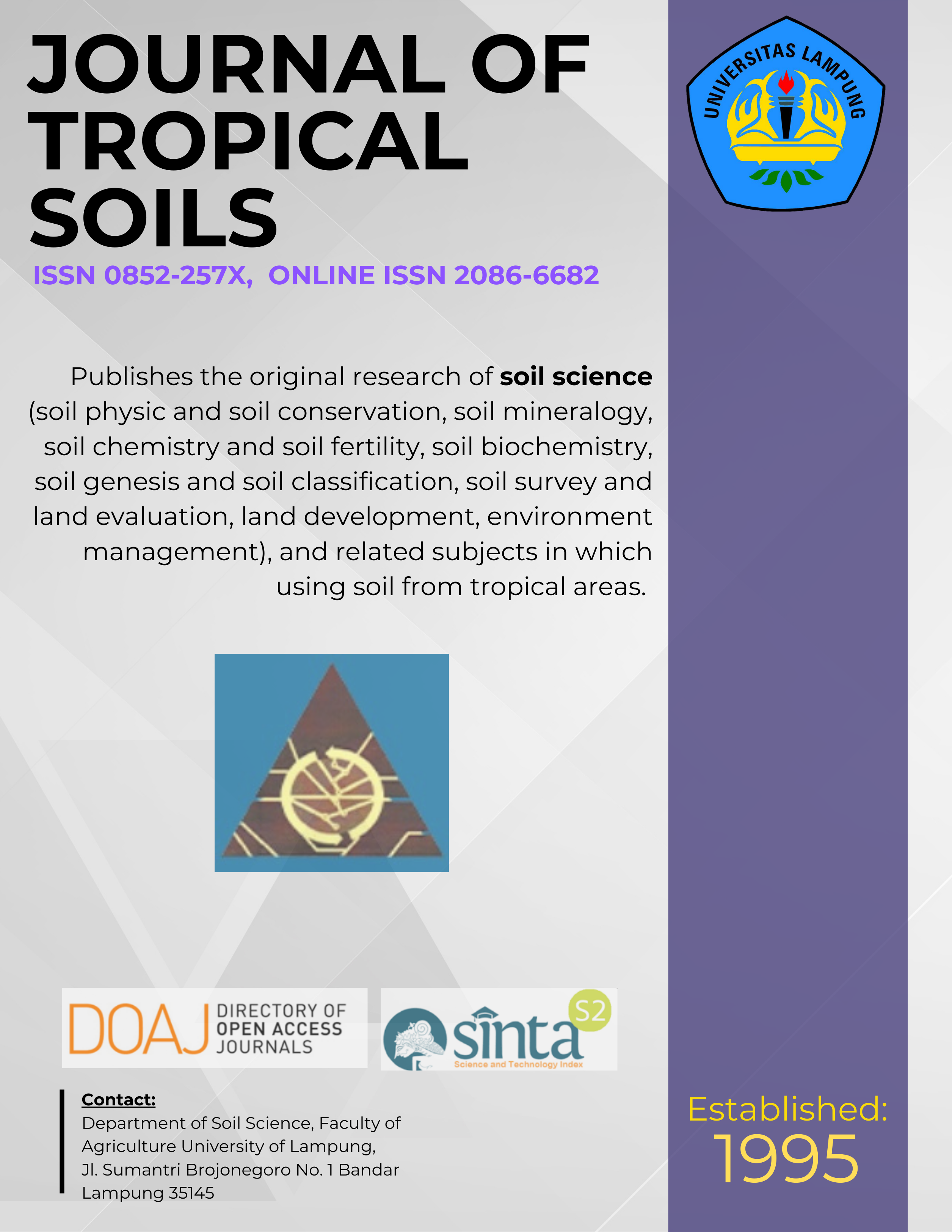CO2 Emissions from Tropical Peat Soil Affected by Fertilization
Main Article Content
Abstract
The conversion of peat soils to agricultural uses has been thought to increase CO2 emission due to several factors, including fertilization. However, evidence on the effect of fertilization on CO2emissionsfrompeat soils is rareand often inconsistence. We measured the effects of different types of fertilizer, including N, P and K sources, and clay as an ameliorant on CO2 emission from a bare peat soil in Lubuk Ogong, Riau Province. Nutrients were added in the following combinations: 0 (unfertilized plot), N source (urea), slow-release N (slow release urea), N and Psource (Urea+SP-36), N, P and K sources (urea+SP-36+KCl) and combined NPK-Clay. Fertilization resulted in a decreasein CO2 emissions compared to that prior to fertilization except when slow-release urea was applied. Decreasing of CO2 emissions was probably due to pH-related effects because the pH in the N treatment was lower than in both the control and the unfertilized plot. A decreasein the level of CO2 emissions among the treatments followed the order NPK-Clay>NP>NPK>urea>slow-release urea. Covariance analyses showed that the difference in CO2 emissions prior to treatment was not significant. The application of individual and combined treatments of N, P, K and NPK mixed with 5 Mg ha-1 clay led to significantly reduced CO2 emissions from bare peat soil in Lubuk Ogong, Riau Province. In addition to fertilization, the water table depth was the only parameter that significantly affected the CO2 emissions (P<0.05). We conclude that the application of nutrient combinations, including N, P, K and clay, could reduce CO2 emissions because these treatments maintain a balanced nutritional condition in the soil with respect to the microbial activity.
Keywords: Amelioration, CO2 emission, fertilization, tropical peat soils
Â
Â
Â
Downloads
Article Details
Section
License for Authors
Authors who publish with this journal agree to the following terms:
- Authors retain copyright and grant the journal right of first publication with the work simultaneously licensed under a Creative Commons Attribution License that allows others to share the work with an acknowledgement of the work's authorship and initial publication in this journal.
- Authors are able to enter into separate, additional contractual arrangements for the non-exclusive distribution of the journal's published version of the work (e.g., post it to an institutional repository or publish it in a book), with an acknowledgement of its initial publication in this journal.
- Authors are permitted and encouraged to post their work online (e.g., in institutional repositories or on their website) prior to and during the submission process, as it can lead to productive exchanges, as well as earlier and greater citation of published work (See The Effect of Open Access).
License for Regular Users
Other regular users who want to cite, distribute, remix, tweak, and build upon author’s works, even for commercial purposes, should acknowledge the work’s authorship and initial publication in this journal, licensed under a Creative Commons Attribution License.

